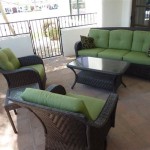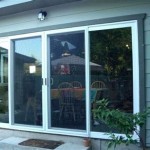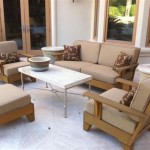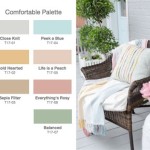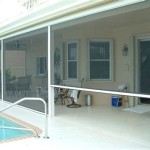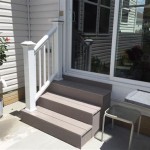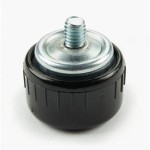Replacement Glass for Round Patio Tables: A Comprehensive Guide
Outdoor furniture provides an extension of living space, allowing enjoyment of nature and relaxation in a comfortable setting. Among the various types of outdoor furniture, patio tables with glass tops are a popular choice due to their aesthetic appeal and functionality. However, the glass component of these tables is susceptible to damage from accidents, weather conditions, or general wear and tear. When the glass top breaks, finding a suitable replacement is crucial to restore the table's utility and safety.
This article provides a comprehensive guide to understanding replacement glass for round patio tables. It covers various aspects, including types of glass, factors to consider when choosing a replacement, installation guidelines, and maintenance tips. The objective is to equip individuals with the necessary information to make informed decisions regarding replacing the glass top of their round patio tables.
Understanding Different Types of Glass for Patio Tables
Selecting the appropriate type of glass is paramount when replacing a round patio table's top. Different types of glass offer varying levels of durability, safety, and aesthetic appeal. Understanding these differences is key to choosing the best option for specific needs and circumstances.
Tempered Glass: Tempered glass, also known as safety glass, is a popular choice for patio tables due to its enhanced strength and safety characteristics. The tempering process involves heating regular glass to a high temperature and then rapidly cooling it. This process creates a glass that is significantly stronger than annealed glass. If tempered glass breaks, it shatters into small, relatively harmless pieces instead of sharp, jagged shards, which greatly reduces the risk of injury. This feature makes tempered glass a particularly safe option for environments where children or pets are present. The thickness of tempered glass used for patio tables typically ranges from ¼ inch to ½ inch, depending on the table's size and intended use.
Laminated Glass: Laminated glass consists of two or more layers of glass bonded together by a layer of plastic interlayer, typically polyvinyl butyral (PVB). This construction provides exceptional strength and impact resistance. When laminated glass breaks, the plastic interlayer holds the glass fragments in place, preventing them from scattering and potentially causing injury. Laminated glass also offers excellent sound insulation and filters out a significant portion of harmful UV rays. While laminated glass is generally more expensive than tempered glass, its enhanced safety and performance characteristics make it a worthwhile investment for some applications.
Acrylic Glass: While technically not glass, acrylic sheets are often used as a substitute for glass in patio tables. Acrylic is a type of plastic known for its high transparency, impact resistance, and weatherability. It is significantly lighter than glass, which can make it easier to handle and install. Acrylic is also less likely to shatter than glass, making it a safer option for some applications. However, acrylic is more susceptible to scratches and can yellow over time with prolonged exposure to sunlight. Its lower heat resistance compared to glass is a factor to consider in warmer climates.
Annealed Glass: This is the standard type of flat glass. It is the most basic and least expensive option. It is not recommended for patio tables due to its brittleness. When it breaks, it shatters into large, sharp shards that pose a significant safety hazard. While annealed glass can be used in certain applications, it is not suitable for patio tables or other situations where safety is a primary concern.
Key Factors to Consider When Choosing a Replacement Glass Top
Selecting the appropriate replacement glass top for a round patio table involves considering several key factors to ensure the new glass top is safe, functional, and aesthetically pleasing. These factors include size and shape, thickness, edge finish, glass type, and UV protection.
Size and Shape: Accurate measurement of the existing table frame or the broken glass is critical to ensure the replacement glass fits properly. The diameter of the round table should be measured precisely to avoid gaps or overhangs. If the table frame has a lip or supports, the glass should be slightly smaller than the inside diameter of the frame to allow for expansion and contraction due to temperature changes. It is also important to verify the glass's shape is a true circle rather than an oval or irregular shape. Slight variations in shape can affect the fit and stability of the glass top.
Thickness: The thickness of the glass is a crucial factor that affects its strength and load-bearing capacity. For round patio tables, the glass thickness typically ranges from ¼ inch to ½ inch. Thicker glass is generally more resistant to breakage and can support heavier objects. The appropriate thickness depends on the table's size, intended use, and the weight of items that will be placed on it. Larger tables and tables that will be used for dining or entertaining require thicker glass to ensure stability and safety.
Edge Finish: The edge finish of the glass is important for both safety and aesthetics. Different edge finishes offer varying levels of protection against chipping and scratching. The most common edge finishes for patio table glass include:
*
Flat Polished Edge:
This finish provides a smooth, clean edge with a slightly beveled surface. It offers a modern and sophisticated look and is relatively safe to handle.*
Pencil Polished Edge:
This finish has a rounded, pencil-like edge that is comfortable to the touch and less likely to chip or crack. It is a popular choice for tables where the edge of the glass is exposed.*
Beveled Edge:
A beveled edge is created by grinding the edge of the glass at an angle, creating a decorative and elegant look. This finish is more expensive than flat or pencil-polished edges but can add visual appeal to the table.Glass Type: As discussed earlier, the type of glass should be considered. Tempered glass is generally recommended for patio tables due to its safety characteristics. Laminated glass offers even greater safety and durability but is typically more expensive. Acrylic is a lightweight and shatter-resistant option but is more susceptible to scratches. When choosing the glass type, consider the intended use of the table, the environment, and the desired level of safety and durability.
UV Protection: Prolonged exposure to sunlight can cause some types of glass to fade or discolor over time. If the patio table will be located in an area with significant sun exposure, consider choosing glass with UV protection. Laminated glass naturally offers excellent UV protection due to the plastic interlayer. Other types of glass can be treated with a UV-resistant coating to help prevent fading and discoloration.
Installation and Maintenance Guidelines for Replacement Glass
Proper installation and maintenance of the replacement glass are essential to ensure its longevity and safety. This section outlines the necessary steps for installing the glass and tips for maintaining its appearance and structural integrity.
Installation Process: Before starting the installation, gather the necessary tools and materials. These include gloves, safety glasses, a measuring tape, a soft cloth, and any necessary adhesive or fasteners. Always wear safety glasses and gloves to protect against cuts and scratches.
*
Preparation:
Clean the table frame thoroughly to remove any dirt, debris, or old adhesive. Ensure the frame is stable and level before installing the new glass.*
Placement:
Carefully position the replacement glass onto the table frame. Ensure the glass is centered and aligned correctly. If the table frame has supports or rubber bumpers, make sure the glass rests evenly on them.*
Securing:
Depending on the table design, the glass may be secured with adhesive, clips, or fasteners. If using adhesive, apply a thin, even bead of silicone adhesive around the perimeter of the frame. Avoid using excessive adhesive, as it can be difficult to remove if the glass needs to be replaced in the future. If using clips or fasteners, ensure they are properly tightened to hold the glass securely in place.*
Curing:
Allow the adhesive to cure completely according to the manufacturer's instructions before using the table. This typically takes 24 to 48 hours. During the curing process, avoid placing any heavy objects on the table.Maintenance Tips: Regular maintenance is essential to keep the replacement glass in good condition and prevent damage.
*
Cleaning:
Clean the glass regularly with a mild soap and water solution. Use a soft cloth or sponge to avoid scratching the surface. Avoid using abrasive cleaners or scouring pads, as they can damage the glass. For stubborn stains or streaks, use a glass cleaner specifically designed for outdoor use.*
Protection:
Protect the glass from scratches and impacts by avoiding placing sharp or heavy objects directly on the surface. Use placemats or coasters to protect the glass from scratches caused by dishes, glasses, or other items.*
Weathering:
During periods of inclement weather, such as heavy rain, snow, or hail, consider covering the patio table with a protective cover. This will help prevent damage from falling debris or extreme temperature changes.*
Inspection:
Regularly inspect the glass for chips, cracks, or other signs of damage. Address any damage promptly to prevent it from worsening and potentially causing a safety hazard. Small chips can sometimes be repaired with a glass repair kit, but larger cracks may require replacing the entire glass top.*
Storage:
During the off-season, store the patio table in a covered area or indoors to protect it from the elements. This will help prolong the life of the glass and prevent damage from freezing temperatures, UV exposure, and other environmental factors.*
Caution Regarding Heat:
Avoid placing hot items directly onto the glass surface. The sudden temperature change can cause the glass to crack or shatter. Always use trivets or heat-resistant mats to protect the glass from heat damage.By following these installation and maintenance guidelines, individuals can ensure that their replacement glass for round patio tables remains safe, functional, and aesthetically pleasing for years to come. Careful attention to detail during installation and regular maintenance will help prolong the life of the glass and prevent costly repairs or replacements.

Tempered Patio Replacement Glass Table Tops Ships Same Day

Fab Glass And Mirror 48 In Aquatex Round Patio Table Top 3 16 Thickness Tempered Flat Edge Polished With 2 Hole Pt 48rdaq6thflt

1 4 Plexiglass Patio Table Top Replacement Glass 36 Dia

36 Inch Round Tempered Glass Table Top With Thick Polished Edge Replacement For Patio Coffee Dining Black

30 Inch Round Tempered Glass Table Top With Thick Polished Edge Replacement For Patio Coffee Dining Black

Glass Outdoor Tables Commercial Dining Accent Tropitone

36 Inch Round Tempered Glass Table Top With Thick Polished Edge Replacement For Patio Coffee Dining Black
Obscure Glass 48 Round Kd Dining Umbrella Table Replacement Parts Tropitone

26 Inch Round 1 4 Thick Clear Glass Table Top With Flat Polished Edge And Tempered Replacement Great For Dining Tables End Outdoor Patio Tops Or

Tempered Patio Replacement Glass Table Tops Ships Same Day
See Also

